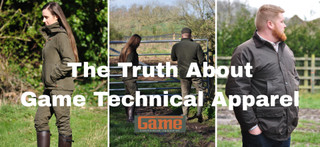Filter by Topic:
Posted by Tony Bithell on Mar 05, 2015
If you are considering joining a walking group such as The Ramblers, you may be a little unsure – perhaps even anxious – about what the walking excursions will entail and what you will need to do to prepare yourself for them! This guide aims to explain what Lowland walking is all about and will offer suggestions about the types of boots, shoes or equipment you may wish to consider, to make sure you are safe and comfortable at all times, during your walks.
So, What is Lowland Walking?
Lowland walking can be defined as ‘an easy countryside walk, where the countryside will not present any major difficulties or problems’. It’s fair to say then, that Lowland walking includes walks in recreational areas, country parks or woodlands, or on natural paths or man-made clearly defined paths. There are many benefits that lowland walking presents, such as enjoying historical sights dotted along towpaths, or the fantastic views observed from coastal paths and beaches, to name a few.
Some lowland walking examples are listed below:
- horse drawn towpaths (e.g. Llangollen Canal)
- nature reserves and country parks (e.g. Loggerheads Country Park)
- country lanes
- urban areas that have open green spaces
- dedicated footpaths
- Coastal footpaths (e.g. Wales Coastal Path)
Sometimes, lowland walks may comprise of short circular walks, which are ideal for responsible dog walking, or sometimes they can be over longer distances – it’s always best to check out the distance beforehand, so that you, and any companions, can be fully prepared!
What to wear on a Lowland walk!
The type of terrain you will encounter when lowland walking, (eg tarmac footpaths or gravelled paths), should prompt you to carefully consider the type of walking boots or shoes you should wear. This will help to reduce ‘impact pains’, whilst keeping your feet comfortable for the duration of your walk.
Walking on tarmac or hard ground for a considerable amount of time, may result in pains in your legs, knees and back, caused by the ‘impact’, from the constant pounding of your feet. It is suggested therefore, that walking boots or shoes fitted with rubber outsoles are worn. Rubber outsoles will help to reduce the impact, give plenty of grip and keep your feet comfortable for longer. Also, ‘arch support’ insoles which are anatomically designed and ‘midsoles’, which offer a cushioned walk, will help to reduce the impact when walking.
If you plan to walk along flat towpaths or country lanes however, then ankle support may not be necessary. Instead, you may wish to consider the Grisport Exmoor shoe. This is a lightweight leather walking shoe which is fully waterproofed and has a “Vibram” rubber sole.
It may be the case though that you plan to walk through a country park or along a dedicated footpath and for these walks, you may find that you need additional ankle support, to give you extra protection. You may wish to consider the Grisport Fuse walking boot. This ia an ideal ankle boot that provides cushioned ankle support. Fully waterproof and lightweight, this boot has a rubber outsole. The Glencoe boot offers support and stability, without the rigidness of a traditional backpacking boot.
Other Essential Equipment To Consider!
Trekking pole
A trekking pole will help to reduce the impact on your knees, especially when you are walking down hill. Do be sure to place all your weight on the poles, rather than on your knees
Day sack or Rucksack
It is always recommended that you carry a waterproof jacket in case the weather changes, and a bottle of water to stay hydrated! A small day sack or rucksack on your back is ideal for carrying such items and, being small, will help to prevent any neck and shoulder pains. Try to obtain a rucksack or day sack with a sternum strap, as this strap will keep your shoulder straps in a comfortable position, preventing them from slipping outwards. This will stabilize the rucksack on your back!

Socks
Wearing the right walking socks is just as important as wearing the right boots or shoes! To help with reducing impact, a looped-stitched sock will give extra cushioning on the sole of your foot. If you are prone to blisters, you may also wish to consider wearing a double layer sock. For futher information about which walking sock to wear, please read our ‘ Walking Sock Guide‘.
Other equipment that may prove useful:
- Waterproof Jackets
- Walking trousers
- Anti-wicking Baselayers (e.g. Bamboo baselayers)
- Hats
- Neck-gaiters
- Mobile Phones
- Maps/guide books or mobile apps with directions
Please do contact us if you would like any further advice – we are always glad to help!


